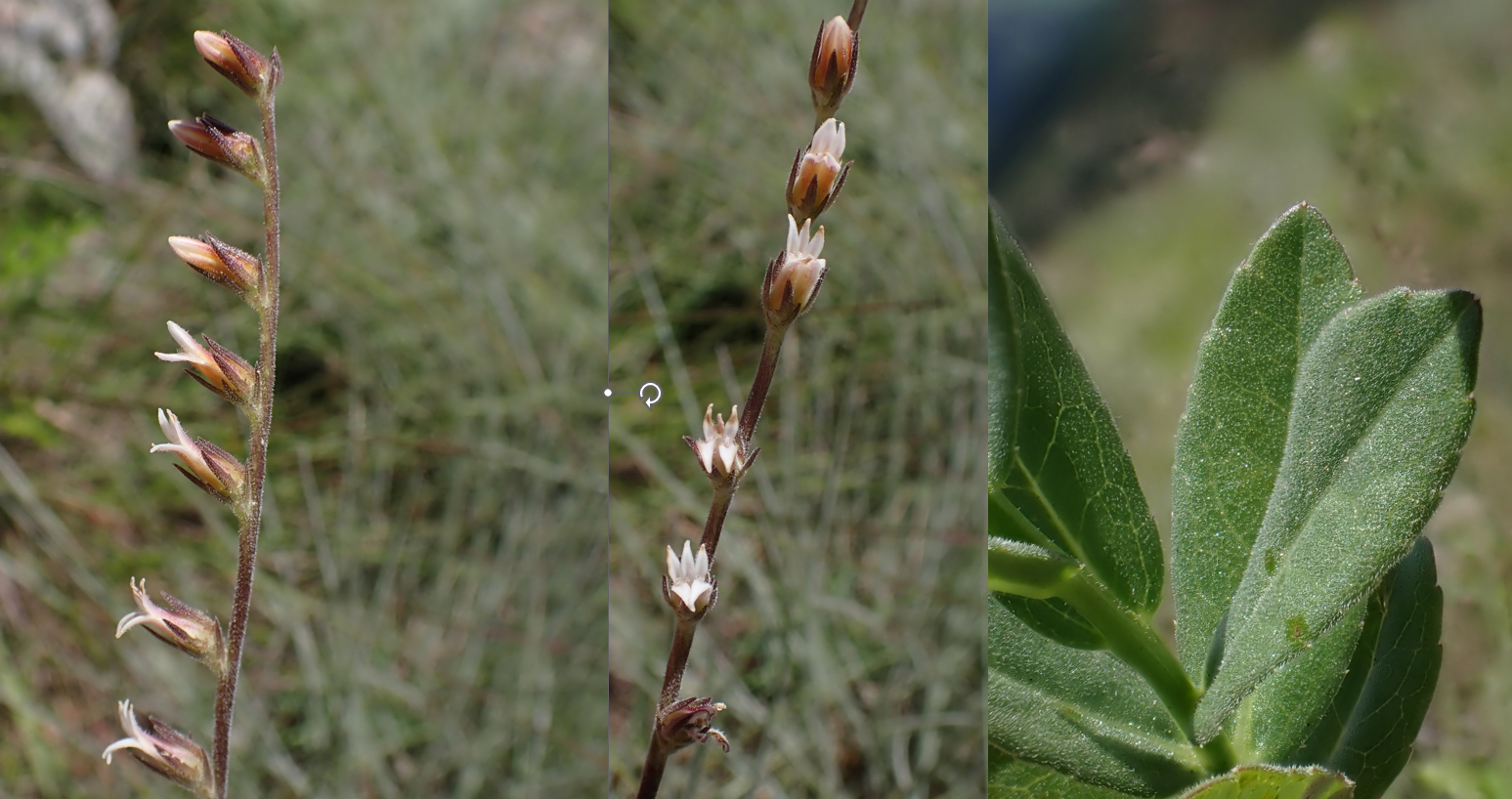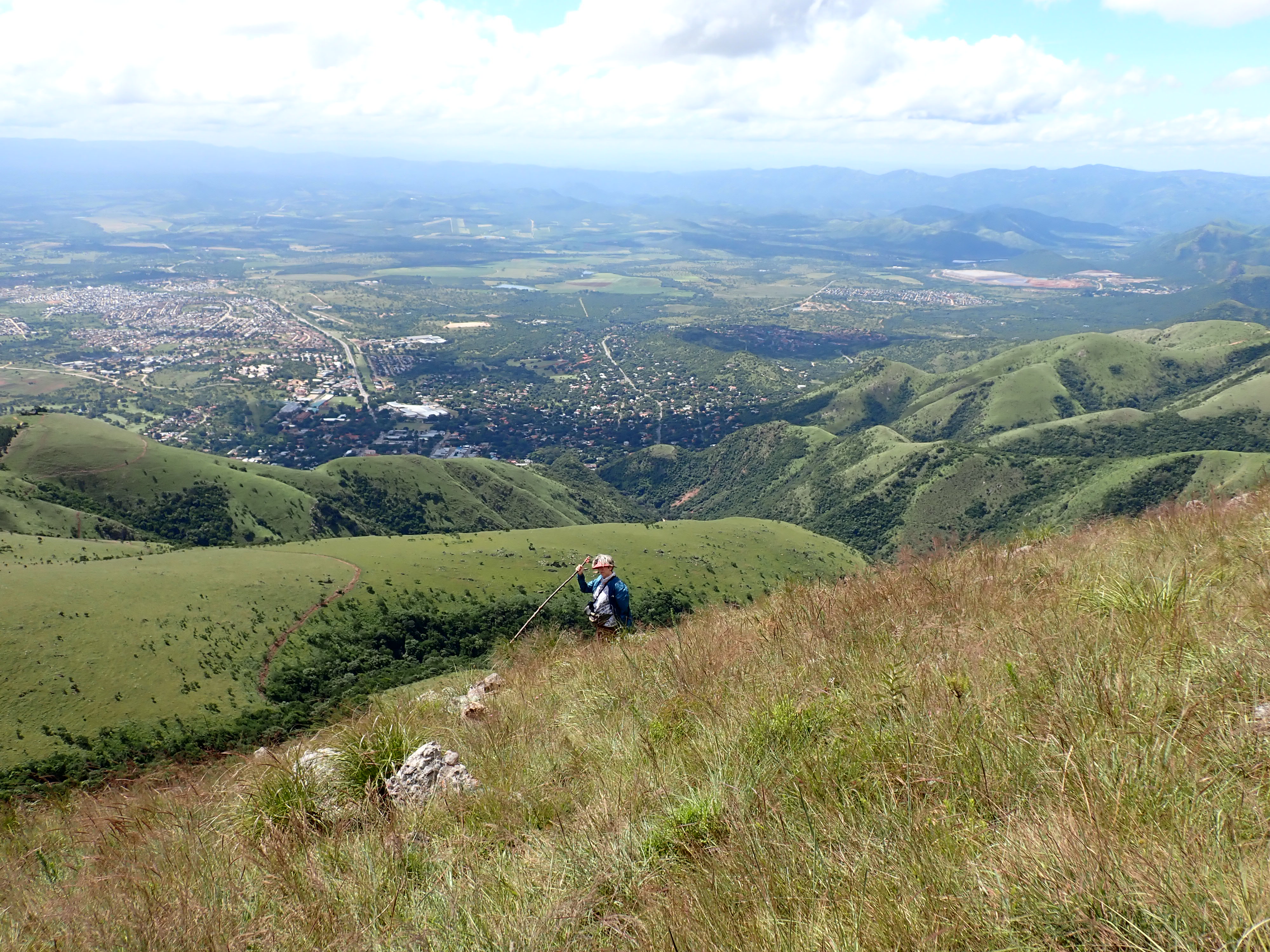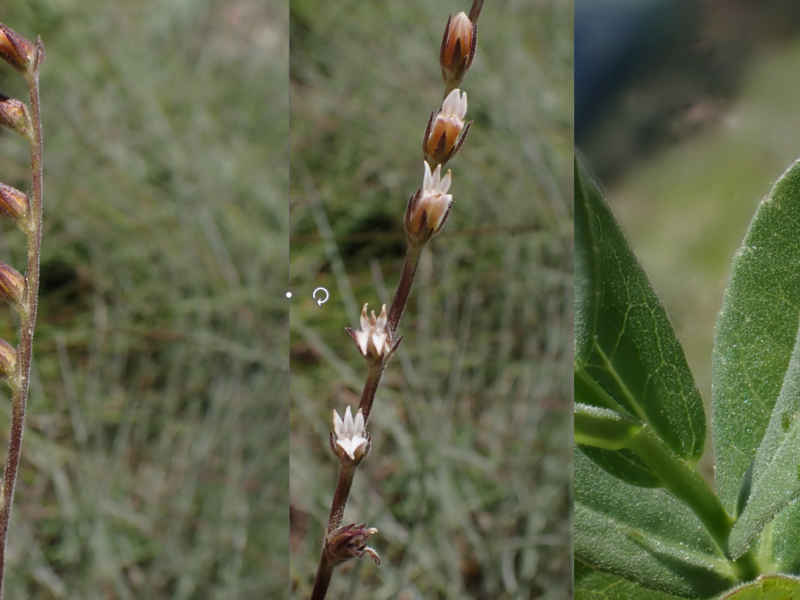
The flowers and leaves of Cyphia deliae, the newly described species
She questioned its identification as Cyphia bolusii (Serpentine Baroe), the name of another BCE endemic species under which it was filed. Upon further examination Hester found that all currently known herbarium specimens of the mystery Cyphia were collected in the Barberton area of Mpumalanga and the adjacent Pigg’s Peak area in Eswatini. To confirm the presence of the species in the wild and to find a live plant, she conducted field investigations from 2019-2022 in the mountainous area south-southeast of Barberton. And through this, she collected the plant and was able to assess how it differs from Cyphia bolusii.

Cyphia bolusii, the species with which is was confused. Photos: Kate Braun
Cyphia deliae is an erect herb and can stand up to 45 cm tall. It is usually unbranched and leafy towards the base. The inflorescence is a lax spike and the flowers are solitary. The corolla is narrowly egg-shaped, rarely urn-shaped with petals recurved at the tip. The flowers are also mainly white to pinkish on the inside and often light orange on the outside.
Cyphia deliae’s range overlaps with those of Cyphiae bolusii, which superficially looks similar, but on closer inspection the species differ primarily by their floral characters as well as the peak flowering time.
Cyphia deliae’s bracts are narrow and shaped like a lance head with 2 or 3 pairs of small teeth along the margin while Cyphia bolusii’s margins are usually smooth. The flowers of Cyphia deliae don’t have stalks and are solitary while the flowers of Cyphia bolusii have short stalks. The flowers of Cyphia bolusii are also usually solitary, but very occasionally there are 2 flowers per bract. The petal length of Cyphia deliae is also longer than that of Cyphia bolusii. The flowering time of Cyphia deliae is mainly January to February and Cyphia bolusii flowers from October to December.

Hester in the terrain where Cyphia deliae grows with Barberton in the background.
At present, approximately 60 spieces of Cyphia are recognized in the Flora of southern Africa (South Africa, Namibia, Botswana, Eswatini and Lesotho) region. Of these species, the majority are found in the Western and Eastern Cape Provinces. The new species brings the number for Mpumalanga to ten and to five for Eswatini.

